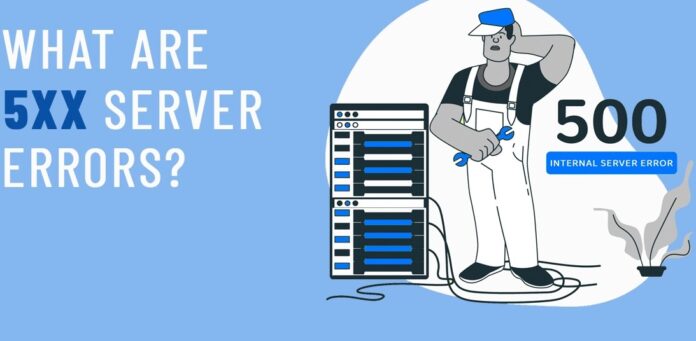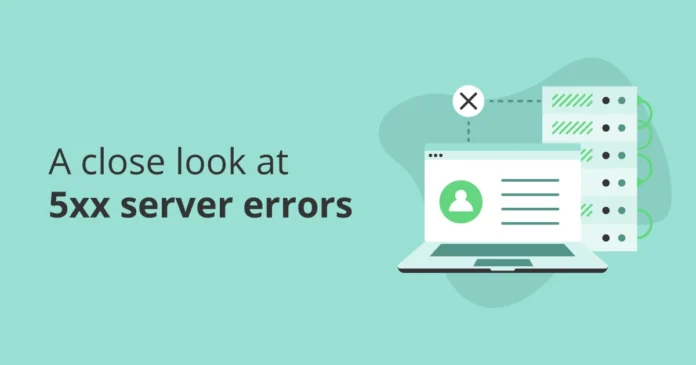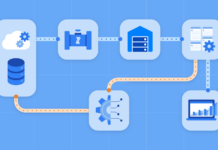If you run a website or web application, chances are you’ve encountered a 5xx server error at some point.
These errors frustrate you and your users and affect the website’s SEO.
Although you can’t fully control these 5xx server errors from occurring but knowing about them could help to some extent.
That’s why we’ve created this article so that you can get an idea of — What 5xx servers mean and how to fix these errors.
What are 5xx server errors?

First, let’s understand what 5xx server error means so that you can understand the reason behind its occurrence.
When visiting a website, your browser sends a request to the server hosting the site and receives a status code indicating whether or not your request was successful.
If you see a 5xx status code on your screen, there’s an issue on the server side.
There are various 5xx status codes, each with its meaning:
- 500 Internal Server Error: This generic error indicates something went wrong on the server side. Misconfigured settings or programming mistakes could cause it.
- 501 Not Implemented: This status code indicates the server does not have the function to fulfill the user request. It could occur if your server is outdated or you are requesting a feature that isn’t supported on the platform.
- 502 Bad Gateway Error: This error occurs when a server gets an invalid response from another server which might happen due to misconfigured settings.
- 503 Service Unavailable: This status code indicates the server is temporarily unable to process your request due to excessive traffic or maintenance on the machine.
- 504 Gateway Timeout: It happens when a server acting as a gateway or proxy doesn’t receive a timely response from its upstream server, possibly due to faulty firewall configuration or a corrupt database.
- 505 HTTP Version Not Supported: This particular error message indicates that the web server cannot accommodate the primary version of the HTTP used in the request. In response, the server provides information on why it cannot support the specified version and suggests alternative compatible protocol versions.
- 506 Variant Also Negotiates: This issue arises in situations involving Transparent Content Negotiation, a protocol designed to allow clients to fetch one of the multiple versions of a specific resource. The occurrence of a 506 error code signifies a configuration error on the server’s part, where the selected version initiates a content negotiation process that is unsuitable as a negotiation endpoint.
- 507 Insufficient Storage: This error signifies that the server is currently unable to fulfill the client’s request due to its incapacity to store the necessary data for completing the request. It’s a temporary situation, similar to a 503 error, and typically arises when the server’s available RAM or disk space is limited.
- 508 Loop Detected: This error arises within the WebDAV protocol setting. It signifies that the server has terminated a client operation due to the identification of an endless loop. This situation may arise when a client initiates a WebDAV request with a “Depth: Infinity” parameter.
- 509 Bandwidth Limit Exceeded: This error message suggests that the server’s administrator has set a bandwidth limit, and when a request surpasses this limit, the error occurs. The server’s configuration includes a specified interval during which bandwidth checks occur, and only once this interval has passed, the limit is reset.
- 510 Not Extended: This error message tells that the client’s access to the requested resource does not meet the prescribed access policy.
- 511 Network Authentication Required: Error 511 says that access to the requested resource is restricted and requires proper authorization. To proceed, the response typically includes a hyperlink directing users to a designated resource to authenticate themselves and gain the necessary permissions.
How to fix 5xx server errors?

So now you know what 5xx codes signify, let’s move on and discuss how to resolve them.
1. Check the server logs
Examining the server logs is the initial step in diagnosing a 5xx server error. These records provide more detail about what occurred and when the error occurred, so look for any error messages or stack traces that might provide insight into its cause.
2. Verify Server Configuration
If the server logs don’t provide any useful information, the next step should be to inspect its configuration. First, ensure all necessary software is installed and up-to-date, then double-check its settings to guarantee they are correct. If unsure what to look for, consult the documentation for your specific server software package for guidance.
3. Verify the code
Once your server configuration looks correct, the code should be checked. Look for syntax errors, missing files, or other issues causing an error. If unsure where to begin, run a code analysis tool or debug the code manually to identify its cause.
4. Verify Third-Party Services

If your site relies on third-party services like payment processors or analytics providers, ensure they function correctly. If one of these third-party vendors is down or having issues, this could be causing the 5xx server error.
5. Increase Server Resources
Sometimes servers can’t handle high traffic volume, and if your website constantly gets high traffic, it’s time to increase server resources like CPU or memory. You can upgrade your hosting plan or contact your hosting service provider.
6. Try a Different Browser
Try accessing the site with another browser. If the error only occurs in one browser, there could be an issue with its cache or settings. Clearing out the cache and resetting browser settings may help resolve the problem.
7. Reach Out to Your Hosting Provider
If none of the above steps work, contact your hosting provider. They may have more insight into the problem or help troubleshoot it more effectively. Be sure to provide as much detail as possible about the error and any steps taken to resolve it.
Conclusion

5xx server errors can be frustrating, but with the right approach, they can be resolved. By understanding each error code and following the steps outlined above, you can quickly diagnose and resolve the problem. Furthermore, taking proactive measures to prevent these errors from occurring first helps guarantee your website or application runs smoothly and provides a great user experience.









